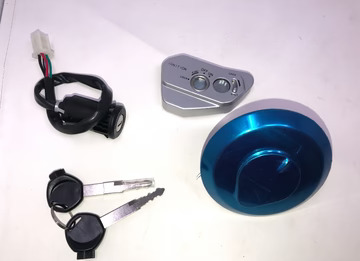Knowing where and how to buy dental supplies efficiently impacts both the quality of patient care and the financial health of dental practices across Australia. Between consumables like gloves and gauze, specialized instruments, and expensive equipment, dental practices manage complex inventories with items that directly affect clinical outcomes. A survey by the Australian Dental Association found that supply costs represent roughly eighteen to twenty-two percent of practice overhead, making procurement strategy genuinely important for profitability. The difference between organized, strategic purchasing and reactive ordering can mean thousands of dollars annually, plus the headache of running out of critical items during procedures. This guide covers what practitioners and clinic managers need to know about sourcing supplies reliably and cost-effectively.
Understanding Different Supply Categories
Dental supplies fall into distinct categories that require different purchasing approaches. Consumables like gloves, masks, bibs, and anesthetic carpules need regular reordering on predictable schedules. These items benefit from bulk purchasing and standing orders with reliable suppliers who can deliver consistently.
Instruments and hand tools represent medium-term investments. Mirrors, explorers, scalers, and forceps need periodic replacement based on wear and usage patterns. Quality matters significantly here because inferior instruments affect clinical precision and break more frequently, creating false economy despite lower initial costs.
Major equipment like chairs, imaging systems, and sterilization units are capital investments requiring careful research and long-term planning. These purchases involve evaluating multiple suppliers, considering service agreements, and understanding upgrade paths as technology evolves.
Then there's the middle category—materials like composites, bonding agents, impression materials, and cements. These directly affect treatment outcomes, so brand preference often develops based on handling characteristics and clinical performance rather than just price.
Choosing Reliable Suppliers
Supplier reliability matters more than rock-bottom pricing when patient care depends on having the right materials available. A supplier who stocks out of essential items regularly creates operational chaos regardless of their discount structure. Look for suppliers with strong inventory management and realistic lead times.
Australian-based suppliers with local warehousing can deliver faster and provide better support compared to direct international purchases for most consumables. While buying directly from overseas manufacturers might save money on bulk orders, the shipping times and complications with warranty claims or returns often offset savings.
Consider suppliers who offer multiple brands across product categories rather than single-brand dealers. This flexibility lets you switch between products based on specific case requirements without managing relationships with dozens of different companies.
Payment terms matter too. Some suppliers offer early payment discounts or extended terms that help with cash flow management. Having net-thirty or net-sixty terms means you're sometimes billing patients for treatments before paying for the materials used.
Balancing Quality and Cost
Cheapest isn't always best in dental supplies. Those bargain gloves might tear constantly, creating safety risks and workflow disruptions that cost more than premium gloves that perform reliably. Same with burs—cheap carbide burs that lose sharpness quickly waste time and create poor clinical outcomes compared to quality burs that cut consistently.
That said, not everything needs premium pricing. Paper bibs, surface barriers, and plastic cups are essentially commodities where lower cost options perform identically to expensive brands. The key is knowing which products genuinely differ in quality and which are just differentiated by packaging.
Many practitioners establish a baseline quality standard for each supply category, then compare pricing among products meeting that standard. This approach prevents false economy while still managing costs effectively.
Inventory Management Strategies
Running out of supplies mid-procedure is embarrassing and disrupts patient care. Overstocking ties up capital and risks items expiring before use. Finding the balance requires tracking usage patterns and establishing reorder points.
Most practices benefit from setting par levels—minimum quantities that trigger reordering. For high-use consumables, this might mean reordering when stock reaches two weeks of typical usage. For expensive or slow-moving items, tighter inventory makes sense.
Some suppliers offer automated ordering systems that monitor inventory and place orders at predetermined thresholds. These systems reduce mental load on staff and prevent the "oh no, we're almost out" panic orders that often mean paying premium shipping costs.




Want to add a comment?